In this NewsFlash, how fish defy the laws of physics, a new vaccine strategy against herpes, and how the brain responds to hunger. Plus, the affect of pesticides on bees, a roundup of science headlines and we chat to Matt Parker, the Stand Up Mathematician, about the Festival of the Spoken Nerd...
In this episode
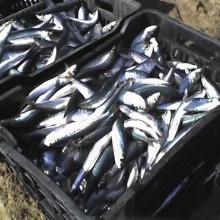
00:18 - How a Fish broke the Laws of Physics
How a Fish broke the Laws of Physics
A group of researchers from Bristol University have discovered that the optical properties of a fish's skin seem be more reflective than was previously thought possible for a non- metallic object.
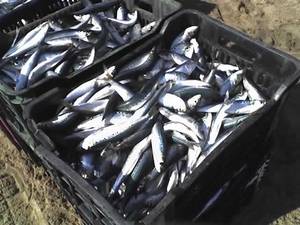 Normally when light is reflected, from snow, or the sea for example, it becomes polarised. This means that the light is reflected only in the direction parallel to the reflective surface, producing the familiar 'glare'. This glare can be reduced by wearing polarized sunglasses.
Normally when light is reflected, from snow, or the sea for example, it becomes polarised. This means that the light is reflected only in the direction parallel to the reflective surface, producing the familiar 'glare'. This glare can be reduced by wearing polarized sunglasses.
Fish such as sardines and herring have skin made up of several layers. Underneath the scales is a layer which contains arrangements of reflective 'guanine' crystals. It was thought that, like other reflective objects, these fish would polarise light, producing a drop in reflectivity. The team found, however, that two different types of guanine crystal are present in the fish's skin. Each of these reflects light in a direction at 90 degrees to the other. This, combined with the fact that the fish has multiple layers of these crystals, means that whatever direction the light comes in at, it is always reflected, so there is no polarisation.
The fish in this study, published in Nature Photonics are all prey animals, so it is thought that reflecting the surrounding light levels gives them some camouflage in the water. The depth of water they live in has a very symmetrical distribution of light, so ensuring they are reflective from all angles gives them a lower chance of being spotted by predators such as tuna or dolphins.
Multi-layer reflective materials are common in things like optical fibres and LED back reflectors, and producing a reflector that does not polarise light can be fundamentally important. These finding may help us produce better reflectors, from a wider range of materials.
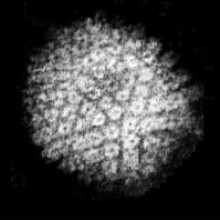
03:38 - Vaccine for herpes
Vaccine for herpes
Using an approach that might also prove successful against HIV, scientists in the US have developed a vaccine for the herpes simplex virus that causes cold sores and genital lesions.
Previous efforts to develop vaccines to protect people from these viruses, which infect more than 80% of the population, have not been successful.
Part of the reason is that, once an individual is infected, the virus retreats inside the nervous system, lurking in just its DNA form beyond the reach of the immune system. From this "latent" state, which persists for a person's lifetime, the virus periodically reactivates, producing infectious skin lesions that can transmit the agent to other individuals.
So the key to effective vaccination is to prevent the virus getting into the nervous system in the first place.
But therein lies the problem, because the very parts of the body that the virus has evolved to infect first, chiefly the mucous membranes of the mouth and genital tract - which are also richly supplied with sensory nerve cells - are normally no-go areas for virus-targeting CD8 T lymphocytes that can provide protection. And so initial vaccination attempts, while very effective at marshalling an immune army, were incapable of deploying the troops to the tissues most in need of defence.
Now two Yale scientists may have found a way to solve the problem. Haina Shin and Akiko Iwasaki, writing in Nature, call their approach "prime and pull".
Put simply, they first vaccinate by administering a weakened form of herpes to the skin. This drives an immune response to the virus, including production of key CD8 virus-combating T cells. They then "pull" these cells to the genital tract by administering, 5 days later, a dose of a pair of chemical "chemokine" signals called CXCL9 and CXCL9. These chemicals are used naturally by the immune system to target cells to tissues.
The result, in groups of experimental mice used by the researchers, was the accumulation of long-lived herpes-recognising memory T cell "sentries" within the genital tracts of the animals.
When these mice were then subsequently exposed, up to 3 months later, with what would otherwise have been a potentially lethal dose of a naturally-occurring herpes simplex virus strain, the animals all survived. Control mice, that had been vaccinated via the skin but had not received the pull signals administered genitally, had mortality rates of almost 50%.
Moreover, checks on the nervous systems of the vaccinated mice showed that, compared with the controls, the levels of virus reaching these sites were orders of magnitude lower.
According to Shin and Iwasaki, "a single topical treatment with the chemokines applied vaginally can provide superior protection against genital herpes by preventing the spread of the infection from the mucosa into neurones."
They also hint at the tantalising possibility that this same strategy might work with HIV too, arresting the virus before it gains access to the immune cells it needs to penetrate in order to initiate an infection...
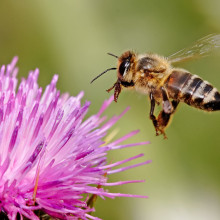
07:43 - The Effects of Pesticides on Bees
The Effects of Pesticides on Bees
A paper published in Nature this week suggests that common pesticides may be having a bigger effect on bees than was previously thought.
Currently, pesticides are tested on bees, but only for 96 hours, and only ever one pesticide at a time.
Richard Gill, from Royal Holloway University, and his colleagues argue that this is not enough, as effects may be caused by the combination of pesticides the bees are exposed to, and may take longer to take effect than the current tests allow for.
The team exposed bumblebee colonies to pesticides for 4 weeks, at levels similar to those found in the field. The pesticides were put in feeders of sugar syrup or on filter paper in the path of the bees' foraging, but a bee could choose how much contact to make with these.
Individual bees were followed by tagging them with micro-chips, and the colony as a whole was also evaluated. The team found that one of the pesticides reduced the number of adult bees emerging from pupae as well as reducing the number that returned after foraging. Another pesticide caused more worker bees to die in the nest. Colonies exposed to both pesticides showed additive effects, and these colonies were the most likely to fail.
Bees are a vital part of our ecosystem; they account for 80% of insect pollination, and their numbers are currently in decline. It is important to work out why so we can try to increase these numbers again and sustain both crops and wild plants.
This study looked at bumblebees, which live in smaller colonies than the more commonly studied honey bees, so are more susceptible to a fall in worker numbers.

10:34 - Skip breakfast and hanker after fatty foods
Skip breakfast and hanker after fatty foods
Hunger pangs cause the brain to lust selectively after more calorie-rich foods, new research has revealed.
In a presentation at the annual Society for Neuroscience conference  being held in New Orleans, US, Imperial College London scientist Tony Goldstone showed data from 21 healthy volunteers who were brain scanned as they surveyed and rated images of a range of food offerings seen either while they were hungry, or straight after a sizeable (700 calorie) breakfast.
being held in New Orleans, US, Imperial College London scientist Tony Goldstone showed data from 21 healthy volunteers who were brain scanned as they surveyed and rated images of a range of food offerings seen either while they were hungry, or straight after a sizeable (700 calorie) breakfast.
When fasted, the subjects consistently hankered after fattier, calorie-packed food choices.
This finding was mirrored in the volunteers' brain scans when hungry subjects surveyed more energy-rich foods. A region called the orbitofrontal cortex, which has been linked previously to decision making regarding pleasantness and reward value of food, showed significant boosts in activity when hungry subjects surveyed more energy-rich foods.
According to Goldstone, "this suggests the orbitofrontal cortex may play a vital role in determining how people make dietary choices."
The data also suggest that fasting may be a poor way to lose weight because it biases the brain in favour of higher-calorie food rewards. Moreover, it supports the advice dieticians have been feeding us for years: don't go shopping when you're hungry...

12:39 - Stand Up Maths and the Festival of the Spoken Nerd
Stand Up Maths and the Festival of the Spoken Nerd
Matt Parker, Festival of the Spoken Nerd
Matt Parker, the stand-up mathematician joins us this week! He's currently on tour promoting a light-hearted view of science and maths as part of the
Festival of the Spoken Nerd. Hello Matt, tell us a little bit about you...
Matt - As you've mentioned, I sit in a middle of a very weird Venn diagram. I work doing proper maths communication, so I'm based at Queen Mary University of London in the maths department, but I also work doing stand-up comedy. And so, this tour is a combination of both those things. We get to do maths live on stage for comedy audiences.
Chris - The two wouldn't normally be regarded as good bed fellows.
 Matt - No and we're very excited that we actually get to take this on a tour because we started just doing a monthly night in London where there were 3 of us - myself, and other stand-ups Steve Mould and Helen Arney. We began just doing the really nerdy comedy and experiments, and music that we enjoy. And people started to show up to watch it, and we gradually got bigger and bigger audiences, and we started selling out bigger venues. And now, we're being taken on a 22-date tour all across the UK.
Matt - No and we're very excited that we actually get to take this on a tour because we started just doing a monthly night in London where there were 3 of us - myself, and other stand-ups Steve Mould and Helen Arney. We began just doing the really nerdy comedy and experiments, and music that we enjoy. And people started to show up to watch it, and we gradually got bigger and bigger audiences, and we started selling out bigger venues. And now, we're being taken on a 22-date tour all across the UK.
Chris - For the first time.
Matt - Yeah, this is it. So, this is our first ever tour. We're going out, bringing live nerdery to the people.
Chris - Who comes along and listens to maths comedy?
Matt - Well, we try to be very inclusive. We do obviously attract a wide spread with some extreme values of nerds. So hard-core nerds show up and believe me, there is something in there for them, but they tend to also bring friends, partners and members of their family who are not as nerdy. And so, we've worked very hard to make sure that this is also a legitimate comedy show. So you can come, you can enjoy the show without having got a very good 'A' level in maths.
Chris - Or with a very bad 'A' level. How do you actually make maths funny? Tell us a bit about the content of the show, what sorts of things do you discuss?
Matt - We try, in this show, to do all the sciences. We try to do a little bit of physics, so we've got a flame tube which is this flame "graphic equaliser" and we can put different frequencies into it and it responds different ways. I will be solving a Rubik's cube live on stage. I'll also be doing a very dangerous experiment. I'm recreating one of Michael Faradays' experiments from the Royal Institution where I'm using parabolas to set things on fire. So, it's just all our favourite nerdy things that we can do on stage, occasionally involving fire.
Chris - Now listeners who are listening very carefully may have noted that you don't sound local. So how do you come to be here doing this because you're originally from Australia, aren't you? Western Australia?
Matt - Yes, I do strange things to vowels. I'm from Perth originally where I studied and went to the University of Western Australia, where I did physics, and then went on to do maths, and after that, I became a secondary maths teacher. I moved to London about 8 years ago to teach maths and I've gradually shifted from being a normal - I use the word 'normal' carefully - maths teacher in schools into working part-time for a university and also doing comedy part-time.
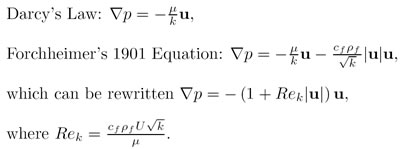 Chris - It's quite brave of Queen Mary University of London to say, "let's actually make a job around this sort of thing."
Chris - It's quite brave of Queen Mary University of London to say, "let's actually make a job around this sort of thing."
Matt - Queen Mary have been incredibly supportive. So, I'm their public engagement in maths fellow, and so, a lot of my job is to communicate maths to other people. I do a lot of maths writing and things like this, lots of mass media, but I also work with the academics and the students. And so, a decent amount of my job is training and working with the undergraduates to help them communicate maths to other people and to go into schools and work with young people. I also work with the academics to help them communicate the research they're doing to other people who may not know as much maths.
Chris - Do you actually have any evidence as to whether this translates into a tangible benefit, a measurable benefit for QMUL? In other words, do you see a lot more people applying into maths as undergraduates than you would've done, were you not there?
Matt - Well, Queen Mary do keep a close eye on where people apply from and they can try to find out how they heard about it, but that's much harder to get to. So, we do track numbers of people applying and we do track where they live when they apply to the university, but all the work that I do is not focused just on getting people to come to Queen Mary - although I'm biased, I think it's a great maths department. My goal and in fact, all the outreach work we do at Queen Mary, is to get people excited to do Maths or something science related, but we don't mind which university they go to. We just want more young people going into the science subjects.









Comments
Add a comment